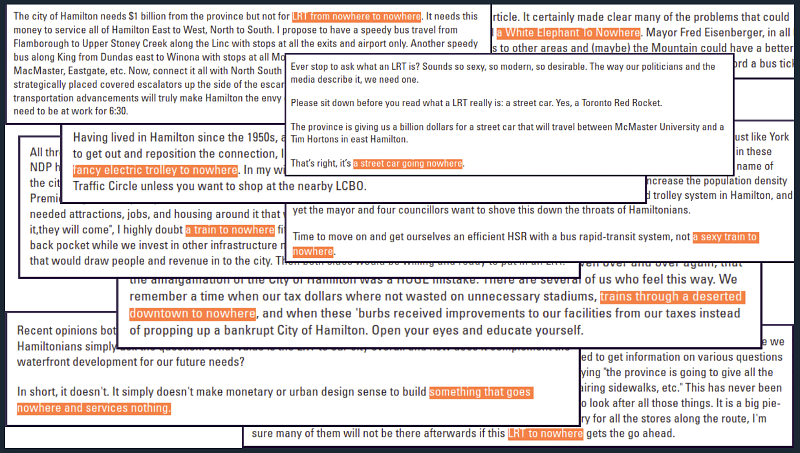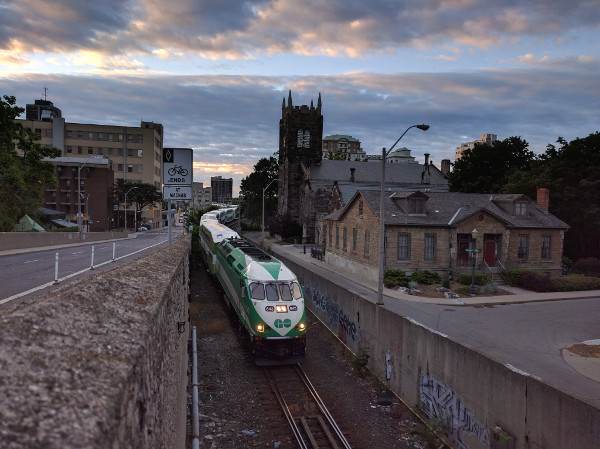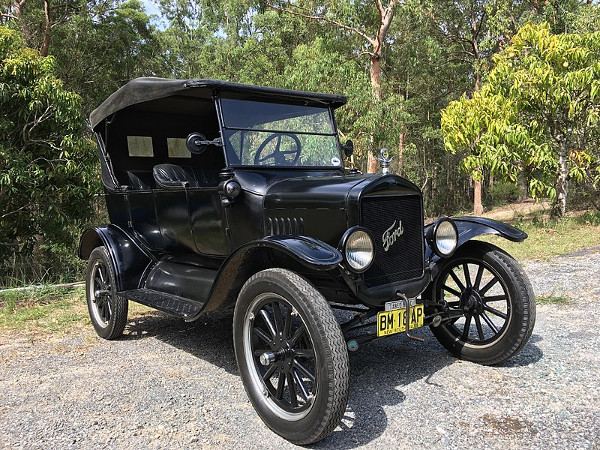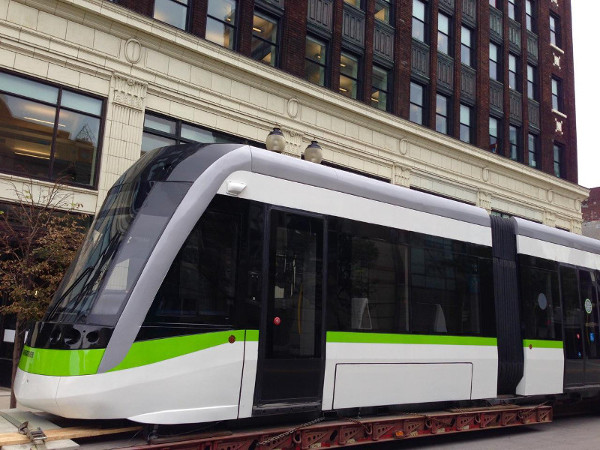The anti-LRT group uses fearmongering and misinformation to try and undermine the case for LRT. Here is the truth.
By Ryan McGreal
Published June 21, 2018
The false information and fearmongering about Hamilton's light rail transit (LRT) system never seems to end. The anti-LRT "No LRT in Hamilton" group has demonstrated repeatedly that facts don't matter to them. They just keep repeating the same discredited lies in the hope that they confuse and misinform enough people to derail the project.
So in the face of the most common false claims, here is the truth.
Earlier this year, Metrolinx conducted a survey of Hamiltonians - half from around the LRT corridor and the other half from across the city - and found that 60 percent support the project. This is despite the large volume of misinformation floating around about LRT and the generally poor job the City has done to explain and champion this project.
The anti-LRT naysayers do not speak for the majority.
Perhaps the most common refrain from LRT opponents is the insulting claim that the 14 kilometre stretch from McMaster University through the downtown core to the east end and Eastgate Square is "nowhere". Like a bad penny, it turns up repeatedly in a litany of stage-managed letters to the editor

Recurring theme in Spec letters
None of the places served by LRT are "nowhere". This anti-LRT lie is not just false, it is also a direct insult to the many people living and working along the city's busiest transit corridor.
McMaster University is a world-class research institution of higher learning with 38,000 students, staff and faculty. It is a major destination and a huge trip generator.
The downtown core has 10,000 residents and 26,000 jobs. It is the single biggest employment centre in the entire city - more jobs than any of our suburban industrial parks - and is growing steadily year after year.
The LRT also connects McMaster Innovation Park, Hunter GO Station, Tim Hortons Field, the commercial centres on James Street, Ottawa Street, Kenilworth Avenue and Queenston Road.
In addition to all the employees and students LRT serves, it also directly serves 120,000 local residents in neighbourhoods across the city from Ainslie Wood and Westdale right through McQuestion West and Bartonville - almost a quarter of the city's entire population within walking distance of a station.
And this is just the first phase of a network of rapid transit lines that will serve the entire city once it is built. We can't expand the network until we build the first piece.
Rapid transit is most successful when the route satisfies three conditions: current transit ridership should be high, there should be lots of opportunity for new infill development around the line, and the Land Use plan for the corridor should make it easy for those new developments to go ahead.
Hamilton's east-west LRT corridor already meets all three conditions. It has 30,000 transit riders a day, the highest in the city and over 40 percent of total transit ridership. It has a lot of empty and vacant lots along the line that are ripe for redevelopment, and the City has implemented a land-use plan that encourages urban investment.

Huge infill development potential in downtown Hamilton (Image Credit: Google Earth)
The north-south A-Line corridor is a planned future site for rapid transit, but the City still needs to do some work to build up transit service and ridership along that route, as well as making sure there is buy-in to redevelop the land around the A-Line - especially along Upper James - to take advantage of rapid transit investment.
Road reconstruction is always disruptive, but Metrolinx and the City have already committed that construction will be phased so that each segment of the LRT line will only be closed for a short period.
The Hamilton Chamber of Commerce has been working closely with businesses along the LRT corridor and across the city to ensure that LRT construction runs as smoothly as possible - and its membership supports this vital investment in the city's revitalization.
Keanin Loomis, President and CEO of the Chamber, recently stated, "We have learned the best practices in terms of how you mitigate the impact to the businesses. And what we have also learned is that the impacts are temporary and they are manageable."
LRT provides high-quality rapid transit across Hamilton with connections to GO transit, which provides regional connectivity throughout the Greater Toronto and Hamilton Area. Both are vital investments in mobility and economic prosperity, and they support each other.
The fact is that 70 percent of Hamiltonians work here in Hamilton. For those who do commute out of the city to work, most commute to Burlington, Oakville, Grimsby and Brantford.

GO Train leaving Hunter Station
This must be one of the silliest anti-LRT lies, but it's also one of the most persistent. LRT opponents love to compare modern LRT with the old-fashioned trolley cars of the early 20th century. This is like comparing a Tesla Model S to a Ford Model T.

Ford Model T: Cars are so retro and obsolete! (Image Credit: Wikimedia Commons)
Modern LRT is dependable, fast, smooth, quiet and fully accessible for people with mobility devices and parents with children in strollers.
It will run in dedicated lanes so it does not get stuck behind vehicle traffic, and it will get priority at traffic intersections so it can proceed quickly and reliably.

LRT vehicle on display at Supercrawl: not your grandfather's streetcar
Self-driving technology is an extremely difficult challenge and we are still at least several years away from any kind of deployment on public streets.
When autonomous technology does become available, it will also be available to install in LRT vehicles. In fact, with their dedicated routes on tracks, the technical challenge is considerably easier to solve.
Vancouver's Skytrain system, which Hamilton City Council turned down back in 1981, has been self-driving since it began operation in 1985.
One of the benefits of the LRT investment is that the Province will cover the cost of replacing all the underground infrastructure along the LRT route. This Provincial funding means the local government will have more money to invest upgrading infrastructure in other parts of the City.
If the LRT project was cancelled, we would have to pay for infrastructure replacement along the corridor with local dollars.
By Ted Mitchell (registered) | Posted June 21, 2018 at 07:15:46
Always opposition to change. Even in the time of greatest change in the history of history.
recall the flag debate:
https://www.youtube.com/watch?v=qTMdH9-k...
listen at 4:00 esp
By TreyS (registered) | Posted June 21, 2018 at 22:24:34
If the LRT project was cancelled, we would have to pay for infrastructure replacement along the corridor with local dollars.
primary reason for LRT
By ScreamingViking (registered) | Posted June 22, 2018 at 00:45:25 in reply to Comment 123090
No. Transit demand is the primary reason, per highlighted points 2, 3, and 5 of the article.
By Tybalt (registered) | Posted June 22, 2018 at 06:33:38
Thank you Ryan. Nothing more to say than that!
By hamil10n (registered) | Posted June 22, 2018 at 08:15:29
The need for better transit system is undeniable. The importance and logic of the main corridor of LRT is undeniable. The potential for growth and densification in this ambitious city is undeniable...but the "R" in LRT does not stand for "Rapid".. they changed that a while ago "Light Rail Transit". Not sure what the predication is now but I've heard estimates of roughly 30+ minutes to get from the east end to the west. This is not Rapid. BRT "Bus Rapid Transit" is a much more viable option for the current and future city. Wheels instead of tracks give you endless options. What happens when there is an accident in or around the track and the train cannot pass? What happens if a train breaks down and can't be moved? Buses can be re-routed. We could increase service up the mountain and have a truly connected city.
By Haveacow (registered) | Posted June 22, 2018 at 18:50:51
I have been very busy doing a project with a client here in Ottawa that deals with the change associated with LRT. I can't say exactly what I am doing but it deals specifically the changes to long time commuting patterns of both the transit rider and the car based commuter environment post LRT.
The first stage of the Confederation Line should (fingers crossed) start operating November 30, 2018. This line is set to change Ottawa in many profound ways, not just in terms of transportation. Both the Libreton Flats and Bayview Development Lands will essentially double the built up area of the city's core in as little as 20 years. $2.5 Billion worth of buildings is already under construction!
These changes alone, will alter how and where people do things in downtown Ottawa. Not just due to a new arena for the Sens and the new Central Library but a new downtown elementary School for the French speaking Public Board of Education, followed by an English one as well as a sport facility for both enabled and disabled athletes. A whole whack of condos and office space is also planned for both development sites, about 8000 units are planned. Some of it will be affordable and city housing is already going up on the existing Trillium line at the new Gladstone Station site, which will open as part of the LRT Stage 2 program in 2021. How much affordable housing is actually built on the Bayview and Libreton Flats site is still up for debate. I believe they will build the minimum that the developer agreed to but I doubt it will be more.
As for the fear of change that drives a lot of pre LRT gitters and anti-LRT sentiment, you just have to ride it out! As the stations go up people are getting more excited here and the majority of the public is staying positive. Just as long as the system is ready for turn over to the city and the operator November 2 and ready for the start or rail operations November 30, 2018.
Here is a video of the first Alstom Citadis Spirit LRV's operating in 2 car consist that will be the common operating form for the Confederation Line once rail passenger operations begin.
Alstom Canada (@AlstomCanada) Tweeted: Another milestone: first video of @ottawacity #CitadisSpirit operating in multi-unit during a dynamic test run! | Un autre jalon: la première vidéo du #CitadisSpirit d'Ottawa fonctionnant en unités multiples lors d'un test dynamique! #readyforrail #Alstom https://t.co/HUH4KCmKoO https://twitter.com/AlstomCanada/status/...
Here is another series of videos from CTV Ottawa
https://ottawa.ctvnews.ca/video?clipId=1...
https://ottawa.ctvnews.ca/video?clipId=1...
https://ottawa.ctvnews.ca/video?clipId=1...
The last video is about the city of Gatineau which is beginning it's own LRT project to the western sector called Alymer (part of an amalgamation of several cities on the Quebec side of the Ottawa River). Gatineau already has a BRT Line (like our Transitways) called Rapi-Bus. The city has an urban population of 275,000 and another 50,000 living in the outer rural areas beyond.
You must be logged in to comment.
There are no upcoming events right now.
Why not post one?